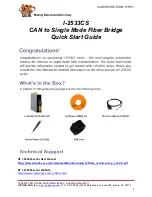
1.4 Service work
The periodic service and failurere-
lated service of the treatment plant
are carried out by the manufac-
turer or a manufacturer-authorised
service partner. The owner of the
property may also carry out guided
service procedures.
The periodic service is recom-
mended to be carried out once a
year. The maximum service interval
is 2 years.
1.5 Treatment process
The WehoPuts treatment plant
works on a batching principle SBR
(Sequenced Batch Reactor), treat-
ing a certain batch of wastewater
at one time. The treatment is based
on a bio-chemical process, where
the microbes living in the activated
sludge decompose the organic mat-
ter in wastewater, while the chemi-
cal deposits the phosphorus.
The cleaning process is divided into
diff erent stages: aerating, chemical
feed, settling and removal. These
stages are carried out in sequence
inside the process tank. Control of
these stages is carried out automat-
ically through the control unit. Aft er
an electrical outage for example,
the treatment plant will automati-
cally resume the process from the
interrupted stage.
Process steps
1. Wastewater batch
accumulation
Wastewater is directed into the
storage tank without separate pre-
treatment. From the storage tank,
the wastewater is pumped into the
process tank. Once the wastewater
level in the process tank reaches the
start-up level, the process starts.
2. Aerating and chemical feed
The compressor in the machine
room aerates the wastewater.
Aerating promotes biological
decomposition and the oxidation
of nitrogen compounds into
nitrate. At the end of the aerating
phase, a chemical is added into the
wastewater. Phosphorus compounds
are separated from the wastewater
using the chemical.
3. Nitrogen removal and settling
Aerating is stopped and sludge
slowly settles to the bottom of the
process tank. The treated, nutrient-
free water gathers on top. The
nitrate-form nitrogen is reduced to
nitrogen gas.
4. Removal of treated water and
residue sludge treatment
Aft er settling, the treated water is
then discharged. Residue sludge is
regularly transferred to the sludge
bag. Sludge may be composted with
other organic household waste.
Alternatively, it can be removed
using a vacuum truck.
1.
2.
3.
4.
4





































